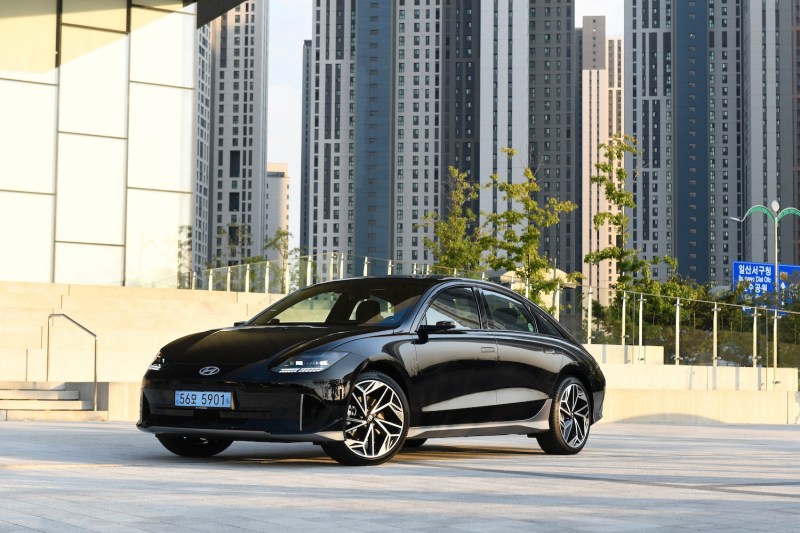
For those who are old enough to remember when plasma TVs first appeared on shelves at electronics stores, while the TVs themselves were amazing, their prices were amazingly exorbitant. But with the advent of evolved technology like LCD, LED, and OLED, not only did the performance of televisions improve, but their cost precipitously dropped, thanks to more efficient and streamlined manufacturing processes.
The story arc for modern EVs looks to be playing out much in the same way as it did for our beloved program providers. While once owning an EV meant you needed a lot of greenbacks to go green, Hyundai is changing all of that with the announcement of its newest Ioniq 2, which promises to be one of the most affordable options on the market when it hits showrooms next year.

The Hyundai Ioniq 2 is expected to have a range of 250 miles
Eclipsing more than 218,000 EVs exported in 2022, the South Korean automaker has doubled its sales over the last two years, and the Ioniq 2 looks to help increase that number. While no official numbers are available as of this writing, the Ioniq 2 is expected to offer a minimum of 250 miles of range.
Like many of its corporate EVs, the Ioniq 2 will be built on Hyundai’s IMA platform, which is not only more cost-effective than the current E-GMP platform used today, but it’s more technologically advanced. This platform will also serve as the underpinning for 13 different Hyundai, Kia, and Genesis models moving forward.

The Hyundai Ioniq 2’s target price is $21,890
The big news is that Hyundai’s VP of marketing, Andreas-Christoph Hofmann, told Automotive News, “Everybody in the industry knows the target of this kind of vehicle is 20,000 euros.” That figure translates to roughly $21,890, which would make it not only the cheapest EV on the market, but one of the least expensive new cars of any kind.
Not so coincidentally, the announcement of Hyundai’s Ioniq 2 comes on the heels of rival Volkswagen’s debut of its ID 2all concept EV, which is set to go on sale in 2025 as well. The VW is expected to have a range of 279 miles and retail for approximately 25,000 euros ($27,000), making the Hyundai a decidedly cheaper competitor.
With the Ioniq 2, Hyundai is taking solid steps toward its goal of being a top-three EV producer by the end of the decade. Including its subsidiary Kia, Hyundai’s mission is to have 3.6 million EVs sold by 2030.
Complementing its already growing stable of EVs, the Hyundai Motor Group is paving the way to more affordable electric vehicles for the masses. With the upcoming Kona EV, along with the Ioniq 5 and 6, the Ioniq 2 will add another channel to display its continuing progress toward making the world a cleaner and greener place. Much like a movie you might watch on your LCD or LED TV today, the Ioniq 2 is an exciting sequel centered on prudent fiscal stability in an unstable world.
Editors' Recommendations
- VW reveals 2025 ID. Buzz trim levels and features, no launch date or prices yet
- The Volkswagen GTI EV: What we know so far
- GMC Sierra EV Denali Edition 1: Ready to go further with improved range
- 2024 Mustang Mach-E GT performance upgrade: Ford’s fast EV love note
- Why Alfa Romeo changed the name of its first EV



